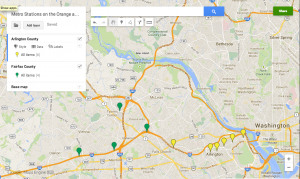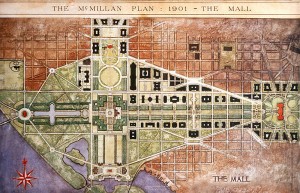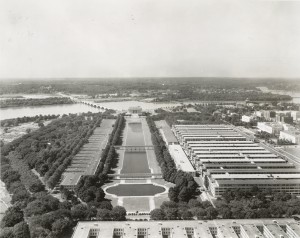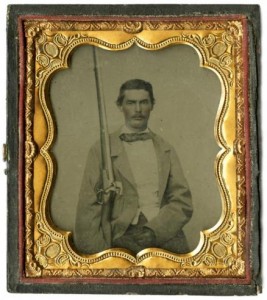
(https://mapsengine.google.com/map/viewer?mid=z0oP4rpRlgMg.kag3M59Mq2pE)
When creating the map, I found that it helped me to visualize the distance and locations served by the metro, as well as those that aren’t. It shows the differences between the locations of the stations in Arlington and Fairfax County, which relates to my research question. Creating the map, however, does not help address the reasons behind the locations of the stations and the thoughts had by the planners making these decisions.
Wednesday, February 26, 2014
Of the three topics I proposed, I would like to look more into the development of the Washington Metro system and how it changed the way the city is looked at today. Many facets of rapid transit systems, like their layout and their sheer importance, fascinate me and finding out more about the one close to home would be very interesting. Things like the initial plan of the Metro and the other ideas that were had for a mass transportation into the city would be helpful to look at. The construction of the system would also be interesting to research. A lot of information regarding the Metro system would also deal with its effect of it on the city and surrounding areas. Finding articles and statistics about the impact on things like real estate prices, development of the suburbs, and the change in different neighborhoods inside the District would provide useful to my research. Much of this information would probably be found in online databases, although a few print books could be helpful to look at.
Wednesday, February 19, 2014
The history of the District of Columbia includes many different topics throughout various time periods. Stretching from its early days as capital of the newly-formed United States, to its modern day identity as a destination for tourists around the world, the District has seen many people and ideas that have shaped the city.
One topic that I find interesting in the history of the District of Columbia is the planning and construction of the Metrorail system. After years of planning for a transportation mode in and around the city, the first section of track opened in 1976. Although more modern than much of the cities’ other historical events, I think the Metro is important to how the cities functions today. Aside from being a source of transportation in the city, it brings huge amounts of people in and out of the city limits. This allows for some people to move out into the suburbs while still being able to work and commute into the city effectively. To do initial research on this topic, finding articles and other sources that talk about the early planning of the transit system would be helpful. Also, sources that discuss the overall impact that the Metro has on the inhabitants of the city would be useful. Many of these sources can be found of online databases like JSTOR or by simply using Google.
Another intriguing topic in the history of D.C. is the city’s role as an important place for African American culture. Although modern demographics have seen some change, the Shaw and Columbia Heights neighborhoods were historically predominantly African American. The famous U Street corridor was the center of riots after Martin Luther King Jr.’s assassination, which shaped the area for decades to come. The history of African American culture in D.C. is important because its role in the history of the city is central to African American culture throughout the country. Many famous branches of the civil rights’ movement took place in the city, making it a background to important events. To learn more about the history of African American culture in D.C., it would be useful to look at the 18th and early 19th century history of these neighborhoods. Looking at the way the neighborhoods and the city were shaped early on in their history gives an idea of how the current situation was developed.
A large part of the modern District of Columbia, the redesign of the National Mall and surrounding monuments also was an interesting point in time of the history of the city. The early 20th century marked a new point in history for the world, so a redeveloped area around the current National Mall area was sought. Central to this plan was the McMillan Plan, which contained ideas on how to change the existing landscape of the National Mall. This period of history is important because it greatly shaped how the city is viewed today. The National Mall and the monuments located around it are a major tourist attraction as well as a piece of nature in a big, fast-paced city. To find more information about this time, researching the McMillan Plan would be very helpful. Looking at primary sources would also give good insight into the feelings that were around while the redeveloping was going on.
 Image
Image
Monday, February 10, 2014
The first primary source I found was a picture taken from the Washington Monument. This picture shows the area of reclaimed land west of the monument where the reflecting pool and the Lincoln Memorial are located. This land wasn’t created until the late 19th into the 20th century. Corroborating with other sources shows that pictures and maps of this area created before the late 1800‘s look drastically different. Other pictures of the area also show that the two walkways that traverse the pool in this picture no longer exist. The buildings located on either side of the reflecting pool in this picture are also no longer in this area. The photo was taken in 1942, so using contextualization, it might be possible that the buildings were involved with the United States’ war effort in World War II.
 image
image
The second primary source I found was an image of a war bond ad located in the Washington Herald. It was printed in October of 1917, towards the end of World War I when supplies and money were still necessary. It shows the war effort that was going on at home and that many different people were involved in it, especially in the District of Columbia. In this ad, the space was paid for by an inn and the Banker’s Association of The District of Columbia. In World War I and World War II, these advertisements for bonds were quite common. Looking at other ads show that most of them appeal to an American’s sense of patriotism and the idea that civilian involvement will help the soldiers overseas. Putting advertisements for bonds like this one in the Washington Herald guaranteed that a sizable number of people would see them, as the Herald was a very popular paper during the early 20th century.
I found that the photo was easier to work with. I tend to be more of a visual person, so looking at a picture and working with the information that it provided wasn’t as difficult. There are also many other pictures of the same thing available, which makes it easier to corroborate information with other sources.
The first website I reviewed was the Smithsonian Archives of American Art’s online archive of interviews with various artists. The purpose of this website is to keep in a single place the transcripts of these interviews. It is hosted by the Smithsonian Institution, which carries with it a certain level of credibility. I did not have much knowledge about these artists before visiting this website. This website looks to be created for individuals doing research on specific artists. The site contains primary sources as well as links to other collections. The website is objective because it only gives the transcripts and doesn’t show preferences to certain subjects. I found the site pretty easy to navigate because it listed all of the artists in alphabetical order with noticeable links. I thought that the easy-to-read transcripts were valuable, but more biographical information about each artist would be helpful.
The second website I reviewed was An American Turning Point: The Civil War in Virginia. The website serves as an online complement to a traveling exhibit by the Virginia Historical Society about the Civil War in Virginia. The site was also created by the Virginia Historical Society with help from different individuals. I consider the site to be credible because it is hosted by a state historical society. I knew some about the Civil War before visiting the site because my dad does a lot of research about it, but the site went into more detail than I had previously known. The website seems to be directed towards an audience with little to no knowledge about the Civil War, but could also be interesting to historians or those with more knowledge. The site contains written information as well as pictures and links to other websites. The site stays relatively objective, although it may view Virginia’s role in the war as more important than some might think. I thought the pictures were important as they broke up the text well. I found the site easy to navigate because of the noticeable headings and links.
 image
image
Wednesday, January 29, 2014
Hi everybody! My name is Sarah Burden and I’m a freshman here at Mason. I was born in Alexandria, VA, but moved to Richmond, VA at a young age and really consider it my hometown. I’m majoring in Sport Management and hope to someday work in Europe for a professional soccer club. Although I never played as kid, I now watch a ton of soccer. I mostly follow the Premier League in England and follow the club Tottenham Hotspur. I also play ultimate frisbee and am a member of the women’s club team here. Frisbee is mostly considered a recreational sport, but the amount of running and agility needed to play Ultimate is immense.
My Web Presence
Overall, my web presence is not very large, though I do spend some time online. I use YouTube mainly to watch a few people who regularly post videos, while using other social media sites like Facebook and Twitter to keep in touch with friends and family as well as famous athletes and musicians. I end up spending most of my time on Reddit though. Reddit is a website where users can post links to other sites that cover anything from breaking world news to pictures of puppies. Although some of the other users can be a little abrasive, most of the information is very accurate and covers topics not normally brought up or thought of. I recently made an account after simply browsing for many months and will most likely end up building some sort of presence there.
Welcome to onMason. This is your first post. Edit or delete it, then start blogging!




